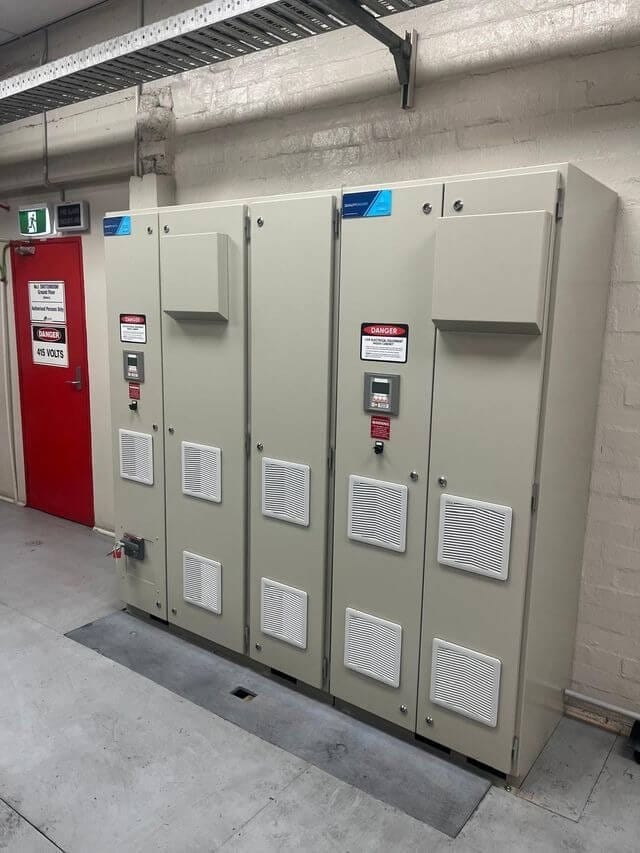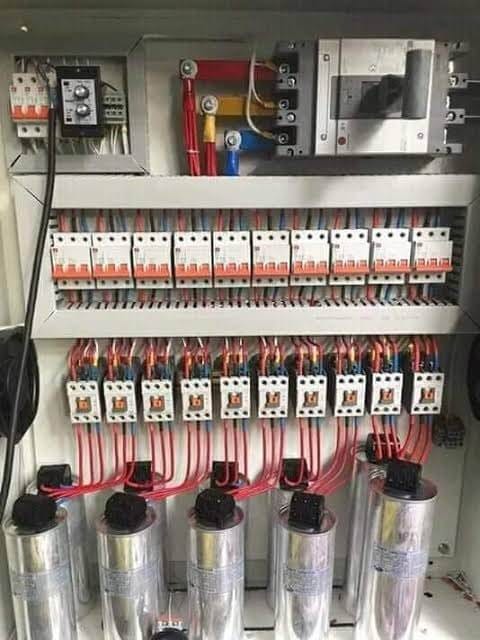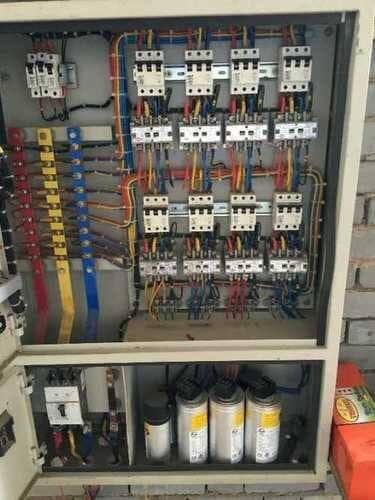Effective power factor correction device technology is now a must have for industrial and commercial facilities to optimize their electrical system and reduce operational costs. As loads get more complex and utility companies get more stringent on power quality, understanding and implementing the right correction strategy has gone from nice to have to need to have.
Modern electrical systems are facing unprecedented challenges from non-linear loads, variable frequency drives and sophisticated electronic equipment that introduces reactive power and harmonic distortion. The strategic deployment of power factor correction devices addresses these challenges and delivers measurable improvements in system efficiency, capacity utilization and operational costs.
Today’s correction technology goes beyond traditional capacitor banks to intelligent and adaptive systems that responds to changing load conditions. These advanced platforms use real-time monitoring, predictive algorithms and automated switching to maintain optimal power factor under varying operating conditions.
Professional electrical engineers and facility managers know that power factor correction is one of the most cost effective way to improve electrical system performance and reduce demand charges and extend equipment life.

Understanding Power Factor Fundamentals
Reactive Power and System Impact
Power factor represents the relationship between real power (kW) and apparent power (kVA) in electrical systems, with poor power factor indicating the presence of reactive power that creates inefficiencies throughout the electrical distribution network. Inductive loads such as motors, transformers, and fluorescent lighting typically consume reactive power, leading to increased current flow without corresponding useful work output.
The impact of poor power factor extends beyond simple efficiency concerns to include increased transmission losses, voltage drops, and reduced system capacity. These effects become particularly pronounced in industrial facilities with significant motor loads or commercial buildings with extensive HVAC and lighting systems.
Utility companies increasingly penalize customers with poor power factor through demand charges and power factor penalties, making correction not just an efficiency measure but a direct cost reduction strategy. Understanding utility rate structures and penalty thresholds enables informed decisions about correction system sizing and configuration.
Harmonic distortion compounds power factor problems by introducing additional reactive components that cannot be corrected through traditional capacitive compensation. This complexity necessitates sophisticated analysis and correction strategies that address both fundamental and harmonic reactive power components.
Load Characteristics and Analysis
Motor-driven equipment represents the largest source of reactive power consumption in most industrial facilities. Understanding motor loading patterns, starting characteristics, and operational schedules enables optimal correction system design and configuration.
Electronic loads including variable frequency drives, computer equipment, and LED lighting systems introduce complex reactive power characteristics that vary with load conditions and operating modes. These loads require careful analysis to determine appropriate correction strategies.
Transformer losses contribute to reactive power consumption, particularly under light load conditions when magnetizing current represents a significant portion of total current. Core losses and copper losses both impact power factor calculations and correction requirements.
Load diversity factors influence correction system sizing since not all loads operate simultaneously at maximum capacity. Proper analysis of load diversity enables optimization of correction equipment sizing while avoiding over-correction conditions.
Types of Power Factor Correction Devices
Capacitor-Based Correction Systems
Fixed capacitor installations provide cost-effective correction for stable loads with consistent reactive power requirements. These systems utilize high-quality power capacitors designed for continuous operation under varying voltage and temperature conditions.
Automatic capacitor banks represent the most common power factor correction devices for facilities with varying loads. These systems utilize contactors or thyristor switches to connect capacitor stages based on reactive power demand, maintaining optimal power factor across different operating conditions.
Detuned capacitor systems incorporate series reactors that prevent resonance conditions while providing power factor correction. These systems offer protection against harmonic amplification that can occur when capacitors interact with non-linear loads.
Individual motor correction involves installing capacitors directly at motor terminals to provide correction at the point of consumption. This approach eliminates reactive current flow through distribution systems while providing additional benefits such as improved motor starting characteristics.

Active Power Factor Correction Equipment
Active power factor correction systems Active power factor correction systems employ power electronic converters capable of dynamic compensation of reactive power at millisecond response times. These systems are capable of supplying and absorbing reactive power as required and offer optimum correction even on fast changing load conditions.
Static VAR compensators (SVCs) are a thyristor-controlled reactor coupled with fixed or switched capacitor to offer continuously variable reactive power compensation. The systems are good in applications that have fluctuating loads at a very high rate or applications that have high power quality requirements.
Active filters combine both the power factor correction and harmonic filtering functionality, and are able to deal with several power quality problems at the same time. These systems offer complete solutions to the facilities where non-linear load component is heavy.
Synchronous condensers are rotating machines used to inject reactive power and are very good voltage regulators. Although not as prevalent in newer installations, such devices provide better performance to certain applications with dynamic voltage support needs.
Methods of Correcting Power Factor Implementation
System Design and Configuration
Techniques of power factor correction selection are based on system configuration characteristics, load characteristics and requirements. Effective system design is based on comprehensive load analysis that includes harmonic content, diversity factors and operation schedules.
Facilities that require a wide range of loads and relatively constant total reactive power are cost-effective using centralized correction systems. These systems normally use automatic capacitor banks located at main distribution panels or utility interconnections.
Distributed correction schemes use smaller correction devices distributed within the electrical system to achieve correction closer to reactive loads with less system losses. This solution provides better voltage control, and less stress on the distribution system.
Group correction The group correction methods are more specific in that they are directed to specific types of loads namely motor control centers or lighting panels and have their own correction equipment. This method is both cost effective and flexible in its operations and makes maintenance processes simple.
Control System Integration
Modern correction systems integrate sophisticated control algorithms that optimize switching operations based on real-time power factor measurements, load forecasts, and utility rate structures. These controls minimize switching operations while maintaining optimal correction levels.
Communication capabilities enable integration with building management systems and energy management platforms, providing centralized monitoring and control of correction equipment. This integration supports comprehensive energy optimization strategies.
Protection systems prevent over-correction conditions that can create leading power factor and associated voltage regulation problems. Sophisticated protection schemes consider both steady-state and transient conditions to ensure safe, reliable operation.
Monitoring and reporting functions provide detailed insights into correction system performance, energy savings, and maintenance requirements. These capabilities support ongoing optimization efforts and demonstrate return on investment.
Power Factor Correction Equipment Selection
Technical Specifications and Standards
Power factor correction equipment selection requires careful consideration of voltage ratings, reactive power capacity, and environmental operating conditions. Equipment specifications must account for system voltage variations, ambient temperatures, and altitude considerations.
Capacitor technology options include self-healing metallized film capacitors that provide excellent reliability and safety characteristics. These capacitors automatically clear minor faults while maintaining operational capacity, improving system reliability.
Switching technology choices significantly impact system performance and maintenance requirements. Contactor-based switching provides cost-effective solutions for most applications, while thyristor switching offers silent operation and unlimited switching cycles.
Protection equipment including fuses, disconnects, and monitoring devices ensures safe operation and simplified maintenance procedures. Proper protection coordination prevents equipment damage while enabling effective fault isolation.

Installation and Configuration
Electrical installation requirements include proper grounding, phase balancing, and harmonic considerations that affect correction system performance. Professional installation ensures optimal performance while meeting safety and code requirements.
Location selection impacts both performance and maintenance accessibility. Correction equipment should be located to minimize harmonic amplification while providing adequate ventilation and maintenance access.
Commissioning procedures verify proper operation of all system components including controls, protection devices, and monitoring equipment. Comprehensive commissioning ensures optimal performance from system startup through operational handover.
Documentation requirements include as-built drawings, test reports, and operating procedures that support ongoing maintenance and optimization efforts. Proper documentation facilitates troubleshooting and enables effective system management.
Advanced Technologies and Applications
Power Factor Correction Circuit Design
Power factor correction circuit design has evolved to address increasingly complex power quality challenges while providing enhanced reliability and performance. Modern circuit configurations incorporate multiple protection levels and sophisticated control algorithms.
Harmonic mitigation capabilities have become essential components of correction system design due to the proliferation of non-linear loads in industrial and commercial facilities. These capabilities prevent harmonic amplification while maintaining effective power factor correction.
Voltage regulation benefits result from proper reactive power management, particularly in systems with significant cable lengths or transformer impedances. Correction systems can improve voltage stability while reducing losses throughout the electrical distribution network.
Power factor correction schematic designs must consider system impedances, load characteristics, and protection coordination to ensure optimal performance. Proper design prevents resonance conditions while maximizing correction effectiveness.
Monitoring and Analytics
Real-time monitoring capabilities provide continuous insight into power factor performance, equipment condition, and energy savings achievements. Modern monitoring systems utilize advanced sensors and communication technologies to provide comprehensive system visibility.
Predictive maintenance algorithms analyze equipment performance data to identify potential problems before they impact system operation. These capabilities reduce maintenance costs while improving system reliability and availability.
Energy analytics platforms integrate power factor correction performance with overall facility energy management strategies, enabling optimization across multiple systems and operational areas. This integration maximizes overall facility efficiency and cost reduction opportunities.
Performance benchmarking capabilities compare actual results against design expectations and industry standards, identifying opportunities for further optimization and validating correction system effectiveness.
Economic Considerations and ROI
Cost-Benefit Analysis
The economic justification for power factor correction typically includes utility demand charge reductions, power factor penalty elimination, and system capacity improvements. Comprehensive analysis should consider all direct and indirect benefits to accurately assess return on investment.
Utility rate structure analysis reveals specific opportunities for cost reduction through power factor improvement. Understanding demand charge calculations, power factor penalties, and time-of-use rates enables optimal system sizing and operation.
Equipment sizing optimization balances correction effectiveness with capital costs to achieve optimal economic performance. Over-sizing correction equipment provides diminishing returns while under-sizing fails to capture available savings.
Maintenance cost considerations include equipment replacement cycles, testing requirements, and operational monitoring needs. Modern correction systems typically provide 15-20 year service life with minimal maintenance requirements.
Implementation Strategies
Phased implementation approaches enable gradual system deployment while demonstrating value and building operational experience. This strategy reduces initial investment requirements while providing flexibility to optimize system configuration based on operational experience.
Financing options including energy service company (ESCO) partnerships can eliminate upfront capital requirements while ensuring professional installation and ongoing optimization. These arrangements align vendor incentives with customer energy savings objectives.
Performance verification procedures ensure correction systems deliver projected benefits while identifying opportunities for further optimization. Regular performance assessments validate ongoing value and support continuous improvement efforts.
Conclusion
Implementing power factor correction device is key to optimising your electrical system in modern industrial and commercial facilities. These systems give you instant cost savings through efficiency and more capacity and reliability.
Modern correction technologies can tackle complex power quality challenges and give you long term benefits. The move to intelligent adaptive systems means optimal performance under all conditions and minimal maintenance.
Investing in quality correction equipment and professional installation gives you measurable returns through reduced utility bills, better equipment performance and more system reliability. These benefits add up over time and give you protection against future utility rate increases and power quality requirements.
IET has 75 years of electrical engineering expertise across East Africa and we are the region’s leading authority on power factor correction solutions for Kenya, Uganda and Tanzania’s industrial market. Our power quality analysis, system design and implementation expertise means optimal correction system performance and maximum return on investment. Contact IET today and get our proven track record to transform your facility’s electrical efficiency with professionally engineered power factor correction solutions.
